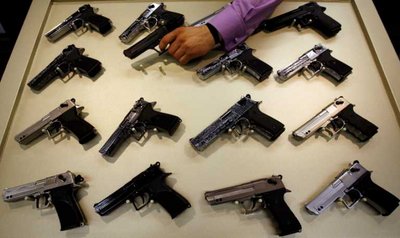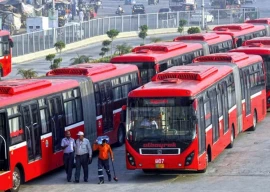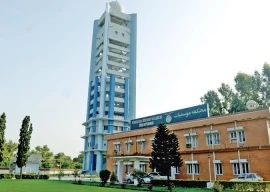
A uniformed woman rests a gun on her shoulder, staring at the camera with great intensity in her eyes. She was a member of the Tamil Tigers women’s wing. This picture was shown by Dr Ranga Kalansooriya, the Asia-Pacific regional adviser of International Media Support (IMS), during a presentation to a small gathering here on Tuesday.
Kalansooriya had come to deliver a talk on ‘Portrayal of Vulnerable Groups in South Asian Media’ at the Rozan office. Kalansooriya spoke about his personal experiences highlighting the impact of civil war and religious conflicts and vulnerability of groups in Sri Lanka, Myanmar and the Philippines.
Starting with Sri Lanka, Kalansooriya explained the scenario during the civil war. Although the situation may normalise over the coming years, Kalansooriya says that conflict-stricken nations are confronted with several challenges while rebuilding. “In Sri Lanka, you can take a gun and fight. But it is not just simple fighting,” He said, adding that 120,000 women were widowed due to the war, while the militarisation of women had destroyed society. “During the war, Sri Lankan mothers and sisters were brutal. We have to worry about the next generation,” He said.

While speaking on Myanmar as an emerging democracy, Kalansooriya said that 70 to 75 per cent of the population was Buddhist. Over there, the vulnerable groups were religious minorities. Anti-Muslim sentiments in Myanmar and Sri Lanka had increased over the years. He said that small incidents in Myanmar can spark a fire. Therefore, the media is careful and conflict-sensitive reporting is encouraged.
While showing gruesome images of journalists that were killed on duty, he sees journalists as the most vulnerable group in the Philippines. According to a recent report, 108 warlords present in the Philippines were affecting what is being reported in the press. “No one can dare report against them,” he said.
In reference to peace talks, Kalansooriya said that peace journalism was agenda driven and was not serving the purpose. “Good journalism is balanced journalism,” he said. The media was very obviously divided into pro-government and anti-govt camps during peace talks in Sri Lanka.
“Pro-peace reporting is in minority,” He said. “People like reading about war and fights. When there is conflict, the circulation of newspapers increases the next day,” He added. He said there are only two media houses in Sri Lanka that are not in the pockets of political groups.
“Due to lack of resources, journalists in South Asia are victims to corruption. Journalists are risking and losing their lives in conflict-stricken areas for nominal amounts,” he added.
Published in The Express Tribune, March 19th, 2014.









1725254039-0/Untitled-design-(24)1725254039-0-270x192.webp)


1725083820-0/Untitled-design-(24)1725083820-0-270x192.webp)
1725096749-0/Untitled-design-(1)1725096749-0-270x192.webp)









COMMENTS
Comments are moderated and generally will be posted if they are on-topic and not abusive.
For more information, please see our Comments FAQ